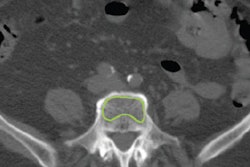Dear CT Insider,
Today's Insider Exclusive explores one of the last bastions of CT overuse -- the emergency department.
Overall CT use appears to have moderated across the U.S. in recent years as facilities take steps to curb the rapid growth of the modality. But the emergency room has been an exception, where routine CT scans of trauma patients have been accepted as perhaps the best way to ensure a fast diagnosis.
Not every trauma patient needs CT, however. Researchers from Boston University Medical Center built a clinical algorithm aimed at reducing overuse by better determining who needs it. Find out how the new regime is working for abdominopelvic trauma patients and their doctors by clicking here.
Cutting emergency department CT use is certainly good news for Boston, but their physicians may be light years ahead of other U.S. providers. In a rather shocking study from Emory University, nearly half of the emergency department providers, including physicians and other staff, couldn't identify which imaging modalities delivered ionizing radiation. This knowledge would seem to be a key step in reducing the dose in emergency departments.
Moving on to prostate cancer, we explore a unique project by Alabama investigators to figure out what their prostate cancer patients actually die of, and when -- because 90% of the time it's something besides cancer. By leveraging unique data on bone and muscle mass that CT acquired in the course of prostate cancer care, the researchers have come upon what looks like a solid mortality prediction model. Find out more by clicking here.
Dose awareness is coming to one of the Middle East's major radiology outposts. Radiation and safety issues are not high on the agendas of clinicians and educators in the United Arab Emirates, where new efforts are being made to optimize dose in the runup to a radiological safety conference set for next month in Dubai. You'll find the rest of the story here.
In the U.K., new research is getting to the core question of how ionizing radiation causes harm to human tissues. Investigators from the Wellcome Trust Sanger Institute drilled down into prostate research to explore the mutational signature of irradiated tissue. What havoc did radiation wreak besides cutting holes in DNA and slicing it in two? Find out more here.
Perhaps you've heard it before, but here it is again, and delivered with an exclamation point from six centers in 18 countries: Coronary CT angiography is an excellent gatekeeper for invasive coronary angiography, say the long-awaited results of the Coronary Computed Tomographic Angiography for Selective Cardiac Catheterization (CONSERVE) trial. Get the details here.
Finally, from the University of Wisconsin we bring you results from the largest study yet to assess the safety of going for extended periods between colorectal cancer screenings with CT colonography. Hint: You can wait a long time and still be safe.
Of course there's much more to see, so we're inviting you to scroll through the links below to discover the rest of the news about CT for yourself, right here in your CT Community.




















